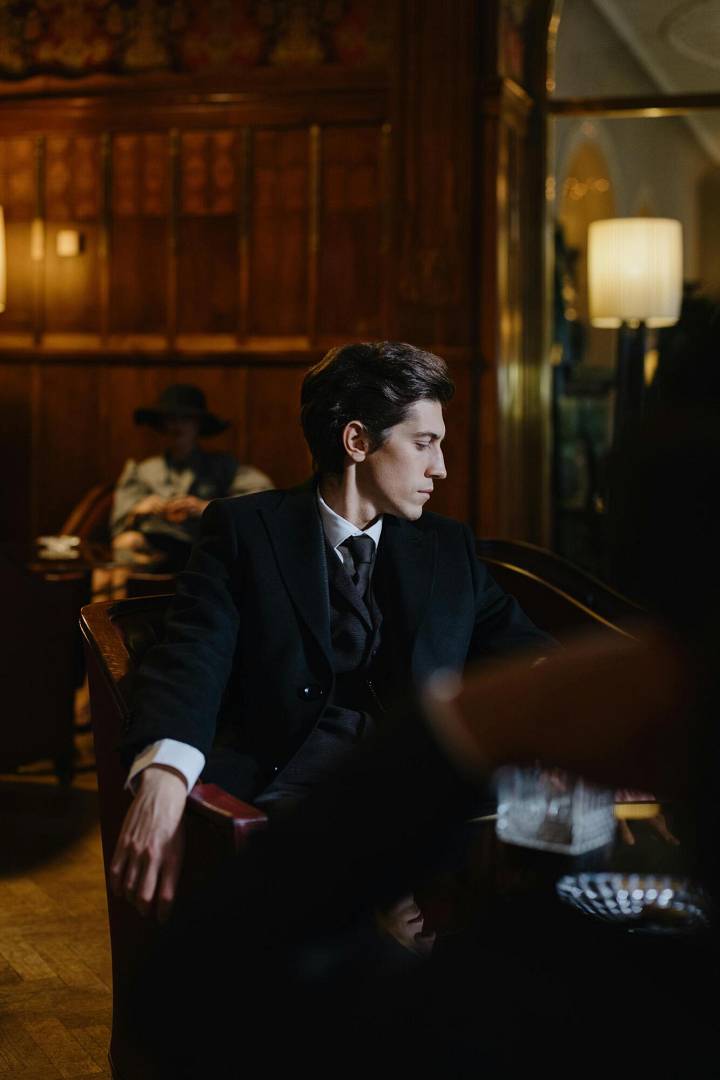Selecting what to wear for a funeral can be difficult. It is a moment when you want to show respect while also feeling comfortable and appropriately dressed. The funeral suit remains one of the most traditional and suitable choices for such occasions. It conveys respect, formality, and care without drawing unnecessary attention.
The importance of understated style
At a funeral, your appearance should reflect thoughtfulness. A well-fitted suit communicates that you have made an effort without trying to stand out. The goal is to look neat and composed, allowing your focus to stay on paying tribute to the person who has passed away.
A funeral suit is not about fashion or trends. It is about timeless simplicity. Black is the most traditional color and will always be appropriate, but dark grey, navy, or charcoal are also acceptable in many cases. These shades maintain a somber tone while offering a slightly softer look.
Choosing the right fabric and fit
Comfort is important, especially during long services or gatherings. Lightweight wool or blended fabrics work best because they breathe well and move easily. The fit should be tailored but not tight. A classic two- or three-piece design provides structure and formality without feeling restrictive.
A properly fitted jacket should sit smoothly across the shoulders, and the trousers should fall neatly without pooling around the shoes. If you decide to wear a waistcoat, make sure it fits comfortably and sits flat. A funeral suit that fits correctly allows you to focus on the occasion rather than adjusting your clothing.
The right shirt and tie
A plain white shirt is always the most respectful choice. It gives a clean foundation and works with any dark suit. Avoid bold patterns, bright colors, or novelty ties. A black or dark grey tie is the standard option, but subtle textures such as matte silk or fine wool can add quiet refinement.
The tie knot should be simple and neat. A classic Windsor or half-Windsor knot keeps the overall look balanced. Remember that understated details often make the best impression in formal settings.
Appropriate footwear and accessories
Footwear should match the tone of the outfit. Black leather shoes, polished and in good condition, are ideal. Oxfords or Derbies work best because they maintain a formal silhouette. Socks should be dark and long enough that no skin shows when seated.
Keep accessories minimal. A wristwatch with a leather strap, a plain belt, and perhaps a small pocket square in black or white are enough. Avoid flashy jewelry or anything that draws attention. The intention is to look respectful, not decorative.
Seasonal considerations
The funeral suit can be adapted slightly depending on the season. In winter, a heavier wool fabric provides warmth and structure. During warmer months, lighter materials such as wool-blend or cotton suits keep you comfortable without compromising formality.
An overcoat in dark grey or black is appropriate for cold weather. It should be simple in design and match the tone of your suit. In summer, removing the jacket during the reception or wake is acceptable as long as the shirt remains neat and presentable.
Dressing for cultural and personal preferences
Funeral traditions vary. Some families may prefer all-black attire, while others accept dark blue or grey tones. When in doubt, choose black. It is universally understood as a color of mourning. If the family has specified a dress code, follow it carefully to show respect.
In some cultures, men wear a black armband or pin as a sign of mourning. These small details can be added without affecting the overall appearance of the suit. Always remember that simplicity and respect take priority over personal style at events like these.
Why quality matters
Investing in a well-made funeral suit ensures you are prepared for formal occasions in the future as well. It can be worn again for memorial services, religious events, or other solemn ceremonies. A quality suit lasts for years and becomes a dependable part of your wardrobe.
The material should drape naturally, and the lining should feel comfortable against the skin. Choosing a neutral, classic design ensures it remains appropriate over time. It is a piece that speaks quietly and carries dignity.
Final thoughts
Wearing the right outfit at a funeral is about showing care and thought for others. A good funeral suit helps you do that with dignity. It should feel comfortable, look respectful, and reflect the seriousness of the day. When chosen thoughtfully, it allows you to pay tribute without distraction and to stand with others in shared respect and remembrance.
